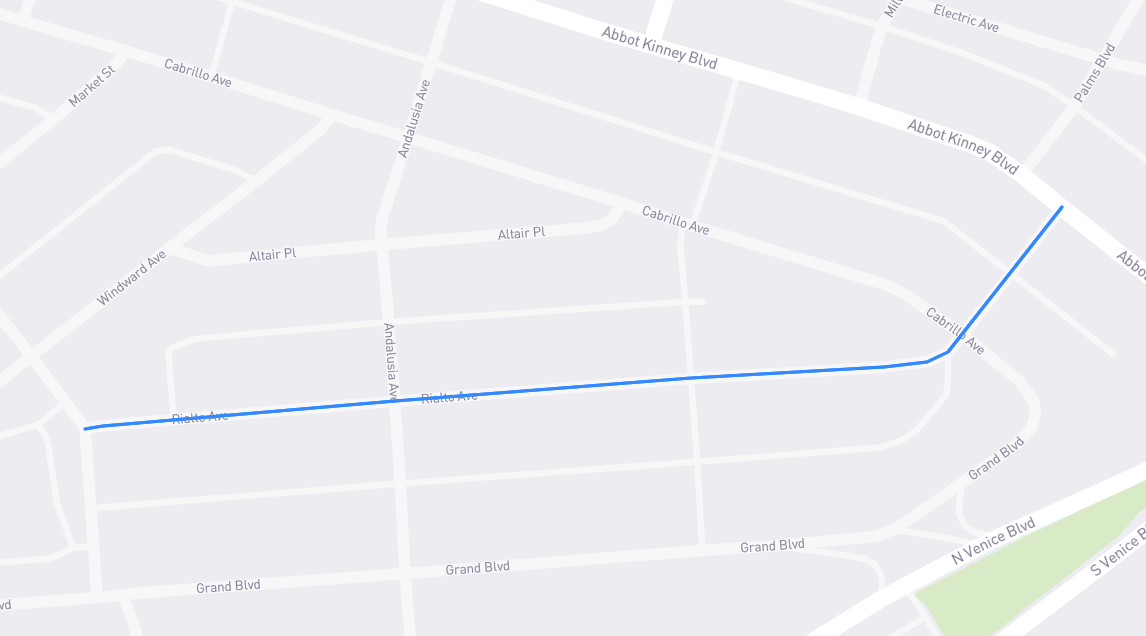On July 4th, 1905, entrepreneur Abbot Kinney opened his “Venice of America” resort, centered around eight canals modeled after those in Venice, Italy. The six canals you see today were laid out by different developers that same year; Kinney’s canals were finito by 1930 thanks to a number of factors: L.A.’s growing automobile usage making them inconvenient; tourists finding more amusements on the shore than in the canal boats; and the poorly-drained canals becoming increasingly filthy and expensive to maintain. Kinney deeded them to the City of Venice (when it was still its own municipality) in 1912, basically to make taxpayers pay for their upkeep. After he died in 1920, there began a demand to convert his canals into streets. Venice set the plans in motion in March 1925 and coined new street names that June: Grand and Rialto canals, which took their names from Italy’s Venice, were to be renamed Grand Boulevard and Rialto Avenue. Venus, Aldebaran, and Altair canals – named after heavenly bodies – would now be San Juan Avenue, Market Street, and Altair Place, respectively. Lion Canal would become an extension of Windward Avenue, Cabrillo Canal would be Cabrillo Avenue, and Coral Canal would be Second Avenue (now part of Santa Monica’s Main Street). It took four more years, the City of L.A. annexing Venice, and numerous legal snags, but the canals were finally filled in and paved by January 29th, 1930.
Find it on the map:

